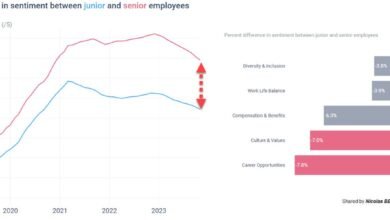
By | Stephanie Snyder
Blue-collar workers are typically defined as those who work in industries such as manufacturing, construction, and transportation. These workers often face unique workplace risks and hazards which can result in workplace injuries or illnesses. As a result, blue-collar workers must be protected by their employers. This article will discuss some of the ways that employers can protect their blue-collar workers.
Ways to Protect Blue Collar Workers
Providing Safety Training
One way employers protect their blue-collar workers is by providing comprehensive safety training programs. This can include training on how to use safety equipment, identify potential hazards in the workplace, and respond in the event of an emergency.
Providing Safety Equipment
Blue-collar workers must be provided with safety equipment, such as helmets, safety goggles, and gloves at a minimum. This equipment can help protect workers from physical harm and reduce the risk of workplace injuries.
Offering Health Benefits
Employers can protect their blue-collar workers by offering health benefits, such as medical insurance and access to on-site medical clinics. This can help workers address any injuries or illnesses they may experience on the job.
Providing Sick Leave & Vacation Time
Employers can also protect employees by providing sick leave and vacation time. This can allow workers to take time off when they are ill or need to address personal matters without fear of compromising their job or income.
Providing Fair Compensation
Finally, blue-collar workers can be protected by providing them fair compensation. This can include offering competitive wages, bonuses, and other compensatory benefits. Fair compensation can help ensure that workers feel valued and appreciated, which can help improve workplace morale, reducing the risk of accidents and turnover.
Importance of Blue Collar Workers in an Organization
Blue-collar workers play an essential role in many organizations. These workers typically perform manual labor, often in the manufacturing, construction, and transportation industries. While their work may not always be glamorous, it is vital to the success of many businesses and the economy as a whole.
They Are the Backbone of Production
Individuals working in blue-collar industries are often responsible for the physical production of goods and services. Without their hard work, many businesses could not produce the products or services they sell.
They Have Specialized Skills
A majority of these tradesmen and tradeswomen have specialized skills that are essential to their industries. For example, welders, electricians, and machinists all have skills that are in high demand. These skills can be difficult to learn and require years of experience to master.
They Are Adaptable
Blue-collar workers are often adaptable and can work in various environments. For example, construction workers may work outdoors in extreme heat or cold, while manufacturing workers may work in noisy or dusty factories. Despite these challenges, these hard workers adapt to their surroundings and perform their jobs effectively.
They Are Essential to Infrastructure
Maintaining and improving infrastructure, such as roads, bridges, and buildings would not be possible without blue-collar workers. Without their efforts, these structures would not function properly or be safe for public use. In fact, these structures may not exist at all if it weren’t for the work of blue-collar workers.
They Provide Critical Services
It’s important to realize that blue-collar workers provide critical services essential to public safety and well-being. For example, sanitation workers ensure that waste is properly disposed of, while firefighters and police officers protect communities from harm.
Risks of Being a Blue-Collar Worker
Physical Injuries
Due to the nature of their industries, blue-collar workers are often required to perform tasks that can be physically demanding and potentially dangerous. For example, construction workers may be at risk of falling from tall heights, while manufacturing workers may be at risk of getting caught in machinery. These risks can lead to serious injuries, such as broken bones, burns, cuts, and more.
Repetitive Motion Injuries
Repetitive motion injuries are injuries sustained over a long period of time due to the repetitive motion and impact of one or multiple parts of the body. Blue-collar workers may be at risk of developing these ailments, such as carpal tunnel syndrome or patellar tendinopathy to name two. Simply put, performing the same motions over and over again take a toll on one’s body.
Job insecurity
Blue-collar workers may also face job insecurity due to automation, outsourcing, and other factors. This insecurity can lead to financial stress and a lack of job satisfaction.
Exposure to Hazardous Materials
Exposure to hazardous materials such as chemicals, radiation, and other substances can have long-term health consequences for workers. For example, power plant workers and insulation contractors were at a particularly higher risk of exposure to asbestos due to its frequent use and relatively unknown dangers. Fortunately, reports of employees at LILCO with asbestos exposure, and other similar instances, have led to stricter workplace precautions when it comes to hazardous materials.
Conclusion
In conclusion, blue-collar workers face unique workplace risks and hazards, and employers must take steps to protect them. With the help of thorough training, strict protocols, safety equipment, health benefits, sick leave and vacation time, and fair compensation, employers can help protect their blue-collar workers and create a safer and more productive workplace for everyone.






